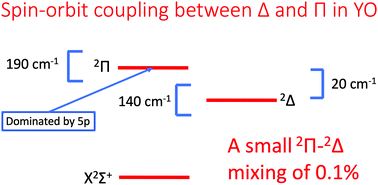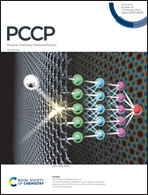Towards accurate prediction for laser-coolable molecules: relativistic coupled-cluster calculations for yttrium monoxide and prospects for improving its laser cooling efficiencies†
Abstract
Benchmark relativistic coupled-cluster calculations for yttrium monoxide (YO) with accurate treatment of relativistic and electron correlation effects are reported. The spin–orbit mixing of 2Π and 2Δ is found to be an order of magnitude smaller than previously reported in the literature. Together with the measurement of the lifetime of the A′2Δ3/2 state, it implies an enhanced capability of a narrow-line cooling scheme to bring YO to sub-recoil temperature. The computed electronic transition properties also support a four-photon scheme to close the leakage of the A2Π1/2 ↔ X2Σ1/2+ cycle through the A′2Δ3/2 state by repumping the A′2Δ3/2 state to the B2Σ1/2+ state, which subsequently decays back to X2Σ1/2+. Relativistic coupled-cluster methods, capable of providing accurate spectroscopic parameters that characterize the local potential curves and hence of providing accurate Franck–Condon factors, appear to be promising candidates for accurate calculation of properties for laser-coolable molecules.

- This article is part of the themed collections: Quantum Computing and Quantum Information Storage and 2020 PCCP HOT Articles


 Please wait while we load your content...
Please wait while we load your content...
